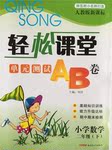题目内容
The word “sharp” can be __ to describe many different things in your home, classroom, and places of work. In this chapter, the writer __sharp pencils, meaning pencils with a very fine __.The writer does not like dull pencils. 。
We can also use “sharp” to describe the blades of knives. Knives also have points. We can use “sharp” to describe a __ kind of point, such as the sharp points of kitchen and steak knives. Scissors have blades, too, and we can describe these blades as sharp or dull. Furthermore, the points of scissors are __ sharp or rounded spending on the kind of scissors. Some tools, such as saws, scrapers, and garden tools, also have blades. We can use the words “sharp” and “dull” to describe the blades of these tools, too. Sharp knives, scissors, and tools are__to use. They cut things easily and quickly, without effort.?
“Sharp” can be used to describe the edges of furniture and __some containers. For example, the edge of a table or desk can be __.In addition; we can describe the edge of __ open can as sharp. The top of a can is sometimes sharp__ to cut your hand. A piece of __ from a broken jar or bottle is ordinarily very sharp.
__we sometimes use “sharp” to describe people. A person who appears sharp is very well __.A person who is sharp, on the other hand, is intelligent, smart, and__ learn and understand.
To summarize, “sharp” can be used to describe many kinds of __ that have blades, points, and edges. When we used it to describe people, it can mean nice looking, well dressed, or intelligent. It is an expensive word because it can be used in many different ways.
1.A. written???????? B. used???????? C. seen???????? D. taken
2.A. talks about???? B. takes care of?? C. doesn't like to mention??? D. makes up his mind to
3.A. sharp???????? B. color????????? C. point????????? D. edge
4.A. some???????? B. any????????? C. only????????? D. certain
5.A. either???????? B. neither???????? C. too?????????? D. very
6.A. difficult?????? B. easy?????????? C. interesting????? D. clean
7.A. for?????????? B. with?????????? C. of???????????? D. at
8.A. seen???????? B. sharp?????????? C. smooth??????? D. hard
9.A. an?????????? B. a????????????? C. the??????????? D. /
10.A. so as???????? B. in order???????? C. so that??????? D. enough
11.A. news???????? B. glass?????????? C. information??? D. advice
12.A. However???? B. Finally???????? C. Therefore????? D. In this way
13.A. prepared????? B. dressed???????? C. mannered????? D. served
14.A. easy to?????? B .is to??? ??????? C. to???????????? D. quick to
15.A. funny things?? B. knives???????? C. objects????????? D. containers
1.B
2.A
3.C
4.D
5.A
6.B
7.C
8.B
9.A
10.D
11.B
12.B
13.B
14.D
15.C
【解析】
试题分析:本文叙述了“sharp”这个词能够被用来形容你家里,教室,工作地点中很多不同的事物。短文介绍了这个词在不同的场合下不同的含义。
1.考查动词及对语境的理解。句意:“sharp”这个词能够被用来形容你家里,教室,工作地点中很多不同的事物。A.被写B.被使用C. 看见 D. 带走,拿走。B
2.考查固定短语及对语境的理解。句意:在这一章中,作者谈到尖锐的铅笔,A. talks about sth谈论某事 B. takes care of照顾,照料C. doesn't like to mention不喜欢提及D. makes up his mind to do sth 下定决心做某事.故选A。
3.考查形容词及对语境的理解。句意:意思就是带有非常尖的头的铅笔。A. 锋利的 B.颜色C. 点 D. 边缘。故选C
4.考查形容词及对语境的理解。句意:我们能有“sharp”这个词形容一种特定的尖类物体。A.一些 B任何C. 仅仅,只D.某个a certain+名词单数,某一个...。D
5.考查代词及对语境的理解。句意:另外,对于使用这种剪刀,其特点就是要么是锋利的,要么就是成圆形的A. 两者中的一个either A or B。B两者都不neither A norB.C. 也D. 很,非常。故选A。
6.考查形容词及对语境的理解。句意:锋利的小刀,剪刀,工具都很容易使用A. 困难的B. 容易的C.有趣的D.干净的。根据:They cut things easily and quickly, without effort.他们能够不费力的很容易很快的切东西。故选B,这些东西很容易使用。
7.考查介词及对语境的理解。句意: “sharp”也能用于形容家具的边缘,和一些容器的边缘。
A. 为了B.和...一起C. ...的D.在...根据:“Sharp” can be used to describe the edges of furniture ,可知填of,即the edges of containers容器的边缘,故选C。
8.考查形容词及对语境的理解。句意:例如,桌子边很锋利。A. 被看见 B. 锋利的C. 平滑的D.坚硬的。根据常识,桌子的角通常是尖尖的直角,故选B。
9.考查冠词及对语境的理解。句意:另外,我们能够把一个打开的罐头盒的边缘形容成锋利的。A. an B. a C. theD. /。根据open,以元音音素开头,故用an,故选A。
10.考查目的状语及对语境的理解。句意;一个罐子的顶部有时足够锋利能够切刀你的手。
so as to do sth B. in order to do sth C. so that+从句目的是...D. enough+名词,形容词/副词+enough。足够的....,故选D。
11.考查名词及对语境的理解。句意;一片从破损的广口瓶或玻璃瓶上掉下的玻璃通常非常锋利。A. 新闻B.玻璃C. 信息D. 建议。根据句意,从坏掉的玻璃瓶上掉下的应该是玻璃,故选B。
12.考查副词及对语境的理解。句意:最后,我们有事使用“sharp” 这个词形容人。A. 然而B.最后,终于C.然而D.用这种方式。在谈过剪刀,罐子之后,最后开始说人,故用B。
13.考查动词及对语境的理解。句意:一个显得锋利的人是穿着很好的。A. 准备B.穿着C.礼貌D. 服务。根据we used it to describe people, it can mean nice looking, well dressed, or intelligent我们用这个词形容人,它意味着好的长相,好的穿着及聪明。故选B。
14.考查短语及对语境的理解。句意:从另一方面来说,一个锋利的人是聪明的,机灵的,很容易学会,理解。A. 很容易做B 是去做C.去D. quick to learn表示“学得很快”。故选D。
15.考查名词及对语境的理解句意;“sharp”能够被用在形容很多种类的物体上,这些物体有刀片,有尖锐点,有边缘。A. 有趣的事情B. 小刀C.物体 D. 容器。根据:The word “sharp” can be _21_ to describe many different things in your home, 这个词能够被用来描述家里很多不同的事物,故选C
考点:科普环保类短文阅读。

 轻松课堂单元测试AB卷系列答案
轻松课堂单元测试AB卷系列答案 小题狂做系列答案
小题狂做系列答案When you are reading something in English, you may often meet with a new word. What’s the best way to know it?
You may look it up in the English-Chinese dictionary. It will tell you a lot about the word: the pronunciation, the Chinese meaning and how to use the word. But how can you know where the word is thousands of English words? How to find it in the dictionary both quickly and correctly?
First, all the English words are arranged(安排) in the letter order. In the dictionary you can first see the words beginning with letter A, then B, C, D…. That means, if there are two words “desert” and “pull”, “desert” will be certainly before “pull”. Then if there are two words both beginning with the same letter, you may look at the second letter. Then the third, the fourth… For example, “pardon” is before “plough”, “judge” before “just”, etc.
Do you understand how to look up in the dictionary?
The dictionary will be your good friend. I hope you’ll use it as often as possible in your English study.
1.This passage is about______.
|
A.new words in writing |
|
B.different dictionaries |
|
C.the best way of reading |
|
D.using an English-Chinese dictionary |
2.In the dictionary you may not find_______.
|
A.how to pronounce the word |
|
B.the spelling of the word |
|
C.who used the word first |
|
D.how to use the word |
3.In an English-Chinese dictionary, the last word______.
|
A.begins with Z |
B.begins with A |
|
C.is a short one |
D.is not often used |
4.Which group of words is in the right order in an English-Chinese dictionary?
|
A.perhaps, produce, plenty |
|
B.straight, subject, surprise |
|
C.century, center, business |
|
D.foreign, entrance, headache |
5.In the passage the writer tries to tell us that_______.
|
A.we have to use a dictionary when we read something in English |
|
B.an English-Chinese dictionary can tell us everything about a word |
|
C.an English-Chinese dictionary can help us a lot in our English study |
|
D.all English-Chinese dictionary are the same |